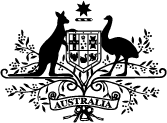Australia has led a successful push for worldwide action to tackle two key global health issues – cervical cancer and eye health.
The Morrison Government welcomes the recent adoption of two Australian-led resolutions by member states of the World Health Organization (WHO):
- Cervical Cancer Prevention and Control: Accelerating the Elimination of Cervical Cancer as a Public Health Problem.
- Integrated People-Centred Eye Care, including Preventable Vision Impairment and Blindness.
Australia was successful in adding Cervical Cancer Prevention and Control to the World Health Assembly agenda in 2018, and led the development of the resolution. Australia is a global leader on cervical cancer elimination. The resolution garnered co-sponsorship from a number of countries.
We now stand ready to work with the international community to take these commitments forward.
The resolution on Cervical Cancer Prevention and Control has been recognised by the President of the Union for International Cancer Control (UICC), Princess Dina Mired of Jordan, as “a generational commitment to eliminate a cancer for the first time”.
“Civil society applauds this achievement, which will bring true momentum to providing girls and women the health care they need to thrive,” she said.
“UICC salutes Australia’s global leadership in championing this cause, inspiring countries with the highest burden of cervical cancer and greatest needs to also commit to elimination.”
The cervical cancer resolution highlights the importance of women’s and girls’ sexual and reproductive health rights in responding to public health issues like cervical cancer.
Australia’s world leading cervical screening and HPV immunisation programs are highly effective at preventing and detecting cervical cancer. Australia remains on track to eliminate it in this country by 2035.
Australia’s leadership reinforces the clear pathway for countries to fast track and strengthen action to eliminate cervical cancer worldwide.
About 800 to 900 Australian women are diagnosed with cervical cancer each year, with more than 200 deaths. Since the start of the National Cervical Screening Program in 1991, using the Pap test, there has been a 50 per cent reduction in cervical cancer incidence and mortality in Australia.
The resolution on Integrated People-Centred Eye Care, co-led by Australia and Indonesia, is an important step in ensuring eye health is integrated as part of universal health coverage worldwide. It supports implementation of effective strategies to address eye care needs, global research, and targets for eye health by 2030.
Globally, at least 1 billion people have a vision impairment that could have been prevented or is yet to be addressed, and this rate is expected to rise. The burden of poor eye health is particularly felt by vulnerable communities and low and middle income countries.
Australia’s global leadership aligns with our strong domestic eye health agenda. This includes Federal Government support for a five-year plan to improve access and close the gap in preventable blindness rates for Aboriginal and Torres Strait Islander Australians, funding for eye checks for people with diabetes under the KeepSight program, and activities to raise awareness about macular disease in line with the National Strategic Action Plan.
